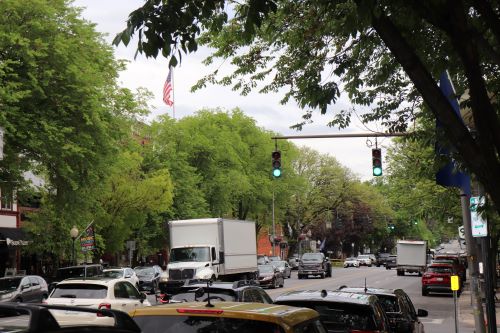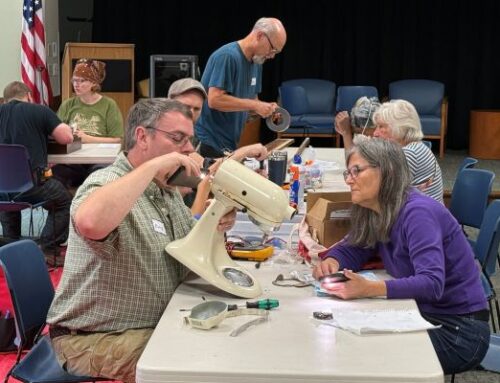
Downtown Truck Traffic: A Challenge for Saratoga Springs
By Ian Elphick, Sustainable Saratoga Summer 2024 Intern
Saratoga Springs is a pleasant city that is centered around store fronts and people being able to walk up and down Broadway. Vehicular traffic is normally busy but the wide sidewalks and numerous crosswalks support pedestrian walkability. This pedestrian access and the hustle and bustle make for a vibrant downtown area.
However, there is one aspect of the street traffic that is not pleasant: the number of 18 wheelers that drive down Broadway, which is the center of downtown and runs north-south, and Church and Van Dam Streets (download a traffic volume report here), which feed into Broadway and run east-west. Both are state highways that allow truck through traffic. This traffic has been a source of concern for both locals that live downtown and downtown business owners, as well as those who go downtown as either area residents or visitors. Some are worried about the effect that vibrations caused by trucks have on older, historic, houses and buildings, due the loud engines and brakes, and the weight of the passing trucks. This might affect building foundations.
 Then, there is the concern of pollution: the average 18-wheeler gets 7 MPG city, and each gallon of diesel burned produces about 10,069 grams of CO2. This means that the average 18-wheeler driving through downtown Saratoga produces 1,438 grams of CO2 per mile compared to the average which gets 25 mpg producing 355 grams of CO2 per mile. Being a high-density area with families with children this raises a concern for families, as 20% of the population of Saratoga is between the ages of 0-19. In addition to the climate impacts, neighboring residents living near these truck routes will also notice the effects of air pollution from other components of diesel exhaust, including nitrogen oxides, ozone, and particulates.
Then, there is the concern of pollution: the average 18-wheeler gets 7 MPG city, and each gallon of diesel burned produces about 10,069 grams of CO2. This means that the average 18-wheeler driving through downtown Saratoga produces 1,438 grams of CO2 per mile compared to the average which gets 25 mpg producing 355 grams of CO2 per mile. Being a high-density area with families with children this raises a concern for families, as 20% of the population of Saratoga is between the ages of 0-19. In addition to the climate impacts, neighboring residents living near these truck routes will also notice the effects of air pollution from other components of diesel exhaust, including nitrogen oxides, ozone, and particulates.
Another concern is the noise level, as 18 wheelers can emit decibels of up to 100. Exposure to this level of noise for more than 30 minutes can cause hearing damage; the number of minutes that causes hearing damage is cumulative, so if a person hears 30 minutes in total over the course of, for example, a week, damage may result. And for a town of almost 29,000 people in an area of 28 square miles with hundreds to thousands of trucks per day that’s a lot of noise and pollution in a highly populated area, especially for those living along the streets where they drive.
This issue is not a new one, it has been going on for years. However, by spreading awareness of the issue we can work together to try and figure out a solution that includes residents and truckers alike.
This video from The Daily Gazette highlights residents’ frustrations




